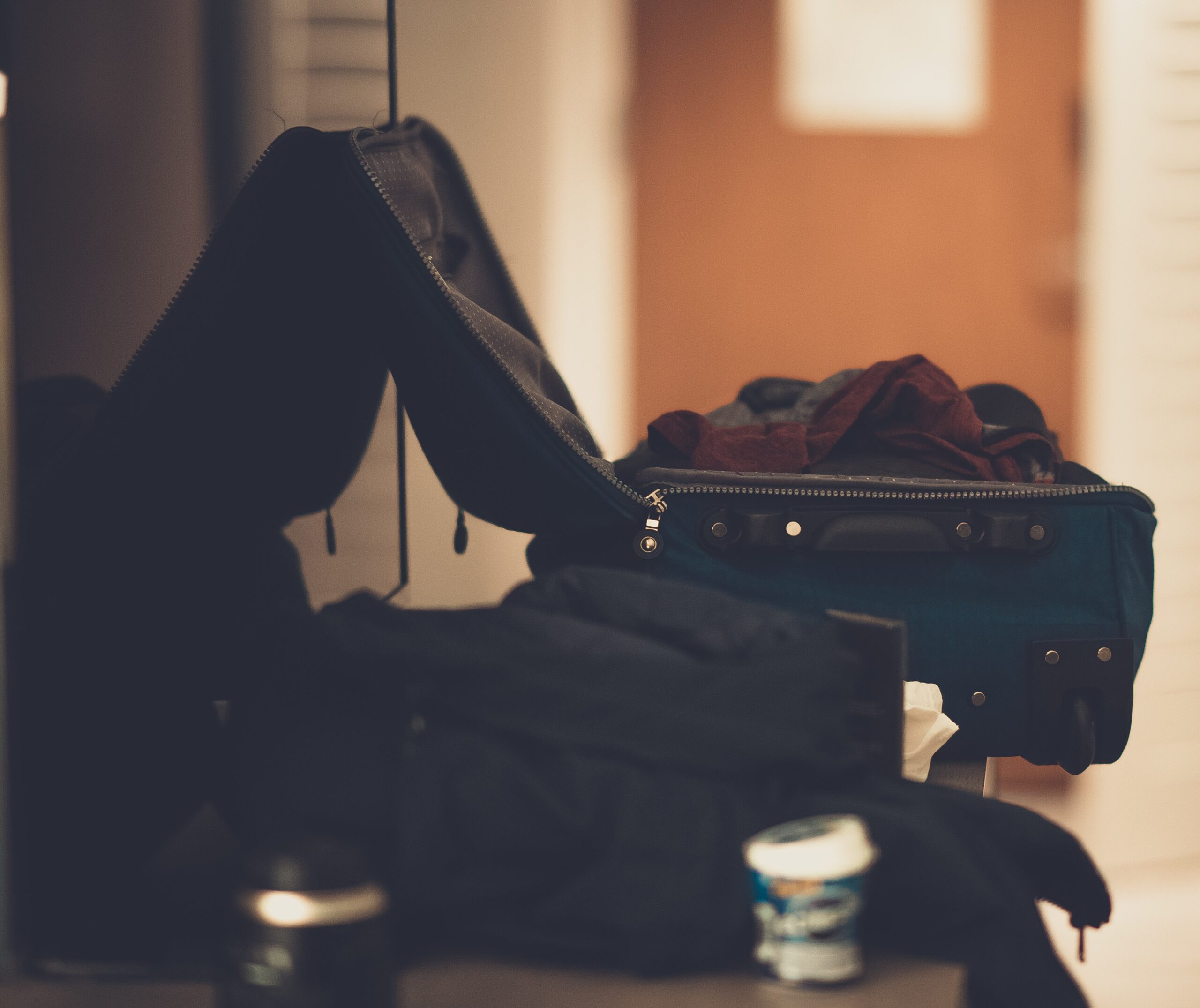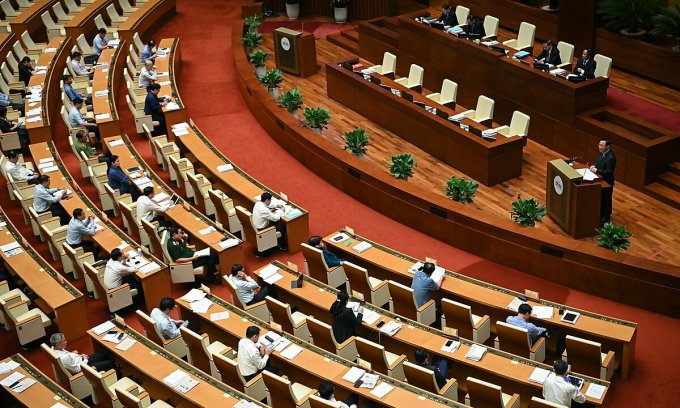Carry-on goods within the duty-free baggage allowance in Vietnam

Hello Lawyer, I have a question that I want you to answer. I want to ask about the limit of goods brought on exit and entry. What are the regulations on carry-on items in the duty-free baggage allowance? Looking forward to the response from the Lawyer.
Thank you for sending us your question. Lawyer X would like to answer your questions about the regulations on carry-on goods in the duty-free luggage standard through the article below.
Legal grounds
Decree 134/2016/ND-CP
Sorting luggage when traveling by plane
Airplane baggage is divided into two categories: hand baggage and checked baggage. Each of these baggage types comes with a clear set of standards and regulations that depend on each airline, but for the most part, they are similar and similar. Baggage weight is specified according to your airline ticket and you can purchase additional baggage when checking in at the airport.
Luggage
Hand luggage, also known as a carry-on bag, is a type of luggage that passengers are allowed to bring directly into the cabin on an aircraft, these are often necessary items to serve personal needs.
Many airlines stipulate that passengers can only bring one piece of luggage and cannot bring prohibited goods. According to regulations, the size of hand luggage is the length, width, and height that must not exceed 115cm. That is, you can bring a suitcase 56cm x 36cm x 23cm or other sizes that do not exceed this number.
Once it’s been rigorously screened, you’ll be free to enter the boarding lounge and place your luggage in the overhead locker. And when the plane finally lands, you don’t have to wait for it to be picked up like checked baggage.
Signed luggage
If your goods are too much and cannot be carried on board, then you must use a consignment service. Checked baggage, also known as check-in bag, is a type of luggage that you must pack carefully and not bring with you.
These are often bulky and heavy utensils and goods. After completing the procedures at the airport, the goods you have checked in will be put into the aircraft’s luggage compartment.
Each airline will have different regulations on this issue. However, most of you will have to pay a fee depending on the weight and size of your checked baggage. However, those things must also comply with the strict regulations of the airlines so as not to make mistakes.
Checked baggage will be stamped with an identification code. It will also be on the same flight as you, and when you get off the plane, you’ll have to wait to pick it up and go through customs as required.
Standard with hand baggage when traveling by plane
To put it simply, hand baggage is the baggage that you take with you when you board the plane and during the journey. With hand luggage, you can bring it on board and put it in the in-flight storage space. Hand baggage is usually regulated with a certain weight of 7kg and fixed size standards (total dimensions of 3 dimensions (length, width, height) cannot exceed 115cm (56cm x 36cm x 23cm or 22” x 11” x 9”).
For example, when buying tickets for VietjetAir, the accompanying weight is 7kg. Important items are electronic devices that are often carried in hand luggage such as laptops, cameras, camcorders, etc.
When traveling on Vietnam Airlines flights, passengers are entitled to at least the following free baggage allowance:
– Special Business and Economy Class: 30 kg of checked baggage + 02 pieces of hand luggage
– Economy Class: 20 kg of checked baggage + a piece of hand baggage
In addition to the above standard, each passenger is allowed to bring the following personal items on board free of charge. You are allowed one carry-on suitcase and one bag of portable electronic devices.
Rules you need to know about hand luggage when traveling by plane
Liquids and liquids: Airlines currently limit the number of liquid goods brought on board that is placed in hand luggage. These types of goods can affect the security and safety of the flight and should be restricted. When you check-in, you will also be reminded by the flight attendants about this rule.
Liquid solutions and beverages must be kept in containers with a maximum capacity of 100ml. Liquid containers must be placed in transparent plastic bags and sealed.
Some luggage that you can bring in hand luggage
– Medicines necessary medicines for your trip. For example, the medicines needed for your health during the whole journey.
– Food, milk, and baby food essentials: Like liquid, and baby milk.
– Cosmetics, lipsticks, creams, powders, and solids that do not contain liquids.
– Necessary items such as clothes, brushes, razors, etc.
– Types of electronic devices, cameras, laptops.
Some baggage cannot be brought on board
– Damaged items such as knives, sharp objects,.. metal affect the security of the flight
– Seafood, meat, smelly foods, and frozen foods are prohibited in hand baggage.
– Feeding animals of all kinds. Some airlines have regulations for transporting pets with them and apply to passengers who need in-flight.
– Explosive or damaging materials and tools that affect passengers and flight safety are prohibited.
– Sticks (baseball, billiards), hockey sticks, golf clubs, martial arts tools, batons, self-defense sprays (tear gas), etc.
In addition, some items are also prohibited such as powders, highly corrosive and destructive substances.
For international flights, there are many regulations on cash and accompanying jewelry such as
– If you carry cash with a value of > 5000 USD, you need to declare cash before the trip
– When carrying gold jewelry, with a volume > 300g, it is necessary to declare it to the customs. With a weight > 1kg, you need to send it back to the customs warehouse and have to bear many other additional costs. So, with international flights, you need to know this to avoid wasting time and money in cases like these.
To carry such a large amount on an airplane, you need a permit from the director of the provincial State bank branch where you reside.
How many carry-on goods will be exempt from tax?
Pursuant According to6 of Decree 134/2016/ND-CP, which provides for tax exemption for luggage of people on exit or entry:
“Article 6. Tax exemption for luggage of people on exit or entry
1. Persons entering with a passport or a replacement passport (except for a passport used for entry and exit), issued by a competent Vietnamese or foreign state agency, and carrying luggage According to the person, luggage sent before or after the trip is exempt from import tax for each entry according to the following norms:
a) Alcohol of 20 degrees or more: 1.5 liters or alcohol below 20 degrees: 2.0 liters or alcoholic beverages, beer: 3.0 liters.
For alcohol, if people entering the country bring whole bottles, jars, jars, or cans (hereinafter referred to as bottles) with a capacity larger than the prescribed capacity but not exceeding a liter, the whole bottle is exempt from tax. In case of exceeding a liter, the excess amount must be taxed according to the provisions of law;
b) Cigarettes: 200 cigarettes or tobacco: 250 grams or cigars: 20 cigarettes;
c) Personal belongings with quantities and types suitable for the trip;
d) Articles other than those specified at Points a, b, and c of this Clause (not on the List of goods banned from import, temporarily suspended from import, or subject to conditional import) with a total customs value. not exceed 10,000,000 Vietnamese dongs;
In case of exceeding the taxable limit, people on entry may choose items for tax exemption in case their carry-on luggage includes many items.
So, in your case, when you want to bring goods with you, you need to make sure that the goods are not in the categories of prohibited products, and have a total customs value of no more than 10,000. 000 VND Vietnam.
Please see more articles
Procedures for establishing a 100% foreign-owned company
Procedures for setting up an import-export trading company in Vietnam
Services of Lawyer X.
Prestigious professional services: Firstly, the team of consultants and consultants for many years in the field of civil status, and customer support.
On-time: Certainly, with the motto “Get your lawyer right at your fingertips”, we ensure the service always performs on time. The rights and interests of customers always come first.
Cost: Besides, Lawyer X’s service costs are highly competitive; depending on the nature of the particular case. So, we want our guests to have the best possible service experience. Therefore, costs which guaranteed to be the most suitable and economical for customers.
Confidentiality of client information: Finally, all brand personal information of client Lawyer X will be 100% confidential.
Please contact us immediately with questions about the “Carry-on goods within the duty-free baggage allowance in Vietnam”
Contact LSX Lawfirm
Finally, we hope this article is useful for you to answer the question: “Carry-on goods within the duty-free baggage allowance in Vietnam”. If you need any further information, please contact LSX Law firm: at +84846175333 or Email: [email protected]
Frequently asked questions
Applies to excess baggage.
Step 1: Taxpayers self-identify, and declare goods and tax-exempt amounts on the customs declaration when doing customs procedures. Take responsibility before the law for the declared content.
Step 2: The customs office where customs procedures are carried out shall base on tax exemption dossiers and compare them with current regulations to grant tax exemption as prescribed.
In case of determining that imported goods are not subject to tax exemption as declared. Then they will be taxed and fined for violations (if any) according to regulations.
Step 3: The electronic data processing system automatically deducts the quantity of exported and imported goods corresponding to the number of goods in the duty-free list.
In case of notice of List by paper. The customs authority shall update and deduct the corresponding quantity of exported and imported goods.
Tax exemption dossiers are customs dossiers prescribed by customs law. Accordingly, luggage of people on exit or entry may go through customs procedures at the border gate.
Persons on exit or entry are not required to declare customs if they do not have luggage exceeding the duty-free quota prescribed by tax laws and have no baggage to be sent before or after the trip. Persons on exit or entry who carry goods over the duty-free baggage allowance through the customs inspection area without making a customs declaration are considered illegal imported or exported goods and handled according to the provisions of law.
For excess baggage, tax exemption dossiers are as follows:
– Customs declaration according to the form issued by the Ministry of Finance: 2 originals
Passport or passport replacement papers with certification stamps of exit and entry agencies for people on entry. A copy.
– The entry and exit declaration form is certified by the Sub-department of Customs where entry procedures are carried out for the people on entry. An original copy.
– Transport documents in case the luggage of the people on entry is sent before and after the trip. A copy.
Conclusion: So the above is Carry-on goods within the duty-free baggage allowance in Vietnam. Hopefully with this article can help you in life, please always follow and read our good articles on the website: lsxlawfirm.com




